Saints, Slaves, and Blacks: The Changing Place of Black People Within Mormonism, 2nd ed.
$27.95
-
“While invaluable for Mormon studies, this book is valuable also to all students of institutions and cultural change.” — Pacific Historical Review
- An excellent treatment of an important part of American religious life. Bringhurst succeeds in showing the Mormons as a microcosm of the American population.” — The American Historical Review



Available in ebook for Kindle, Nook, Kobo, Google Play, and Apple.
Also available through Amazon.
Download a free sample preview.
Book Description:
Originally published shortly after the LDS Church lifted its priesthood and temple restriction on black Latter-day Saints, Newell G. Bringhurst’s landmark work remains ever-relevant as both the first comprehensive study on race within the Mormon religion and the basis by which contemporary discussions on race and Mormonism have since been framed. Approaching the topic from a social history perspective, with a keen understanding of antebellum and post-bellum religious shifts, Saints, Slaves, and Blacks examines both early Mormonism in the context of early American attitudes towards slavery and race, and the inherited racial traditions it maintained for over a century. While Mormons may have drawn from a distinct theology to support and defend racial views, their attitudes towards blacks were deeply-embedded in the national contestation over slavery and anticipation of the last days.
This second edition of Saints, Slaves, and Blacks offers an updated edit, as well as an additional foreword and postscripts by Edward J. Blum, W. Paul Reeve, and Darron T. Smith. Bringhurst further adds a new preface and appendix detailing his experience publishing Saints, Slaves, and Blacks at a time when many Mormons felt the rescinded ban was best left ignored, and reflecting on the wealth of research done on this topic since its publication.
AuthorCast Interview with the Author:
Comprehensive Table of Contents:
.
Foreword to the Second Edition
Foreword to the First Edition
Preface to the Second Edition
Preface to the First Edition
Acknowledgments
Introduction
Chapter 1. Initial Latter-day Saint Racist and Antislavery Attitudes, 1820–1830
Chapter 2. The Origins of Mormon Anti-abolitionism, 1830–1839
Chapter 3. Black Mormons and Mormon Racist Theories, 1830–1839
Chapter 4. The Climax of Mormonism’s Antislavery Impulse, 1839–1852
Chapter 5. The Beginnings of Black Priesthood Denial 1839–1852
Chapter 6. Concurrent Anti-abolitionist and Anti-slavery Rhetoric, 1852–1865
Chapter 7. Black Priesthood Denial Publicized and Reinforced, 1852–1865
Chapter 8. The Perpetuation of Black Priesthood Denial, 1865–1918
Chapter 9. Segregation, Civil Rights, and Black Priesthood Denial, 1918–1978
Epilogue. The Abandonment of Black Priesthood Denial
Postscript. W. Paul Reeve
Postscript. Darron T. Smith
Appendix A. Membership Totals and the Shifting Geographic-Ethnic Focus of the Latter-day Saint Movement, 1830–1980
Appendix B. A Brief Essay on Mormon Socioeconomic Origins and Their Possible Relationship to Latter-day Saint Racial Attitudes
Appendix C. Mormon Slaveholders, Black Slaves, Free Blacks, and Census Information on Utah’s Black Population, 1830–1980
Latter-day Saints Known to be Slaveholders, 1836–1865
Appendix D. Official LDS Church Statements on Blacks and the Priesthood and Civil Rights
LDS Church First Presidency Statement on the Question of Blacks Within the Church, August 17, 1949
Position of the LDS Church on Civil Rights, October 6, 1963
LDS Church First Presidency Statement on Position of Blacks within the Church And Civil Rights, December 15, 1969
LDS Church First Presidency Statement Affirming the Right of the Priesthood to Black Mormon Males, June 8, 1978
Appendix E. An Unintended and Difficult Odyssey
Bibliographic Essay
General Secondary Works on Mormonism
Secondary Works prior to 1981 on the Interaction Between Blacks and Mormons and the Development of Mormon Practices and Attitudes
Secondary Works since 1981 on the Interaction between Blacks and Mormons and the Development of Mormon Practices and Attitudes
General Works on Race and Slavery in the Larger Non-Mormon Environment during the Nineteenth Century
Mormon Scriptures
Latter-day Saint Newspapers and Serial Publications
Mormon Tracts and Pamphlets
Published Diaries, Journals, Letters, Memoirs, and Source Collections
Manuscripts
Contemporary Accounts by Non-Mormons
Non-Utah or Schismatic Mormon Materials
Index
Q&A with the Author:
.
Q: When it was first published (1981), was Saints, Slaves and Blacks the first comprehensive book-length study published on the topic of race within Mormonism? Give us a timeline and little information behind your decision to write the book?
A: Yes, Saints, Slaves, and Blacks was the first comprehensive book-length study published on the topic of race within Mormonism. Although an earlier monograph, Stephen G. Taggart’s cursory Mormonism’s Negro Policy: Social and Historical Origins published in 1970, postulated that Joseph Smith implemented the black priesthood ban during the 1830s in response to Mormon difficulties in the slave state of Missouri. My own work which rejected Taggert’s limited “Missouri Thesis” is much more comprehensive. It took eleven years to complete, going through a two-stage process. The first stage involved producing a doctoral dissertation at the University of California, Davis, with the research and writing taking five years to complete, from 1970 to 1975. The second stage involved transforming the dissertation into a publishable book. This process involving further research and extensive re-writing that took another six years, from 1975 to 1981. Prompting my 1970 choice of this topic for a dissertation was the intense controversy surrounding the LDS Church’s priesthood and temple ban on black members, during the turbulent decade of the 1960s.
Q: What was the initial reception of Saints, Slaves, and Blacks when it was first published? Did its reception change over time?
A: Initial reception of the book can be best described as “mixed.” It attracted limited notice both within and outside the Mormon community. The Mormon Church’s owned-and-operated Deseret News completely ignored it, as did all other official LDS publications, including the academically-oriented BYU Studies. The book was the victim of bad timing given its publication a mere three years following the Church’s 1978 revelation that reversed the policy on race-based priesthood and temple restrictions. Mormons of all stripes were anxious to forget the now-embarrassing practice of black priesthood and temple denial, previously promoted as essential doctrine.
Reviews of the book were also mixed. On the negative side, one scholar, an active Latter-day Saint, who had written on black slavery in Utah, excoriated the volume for what he perceived as its “extreme anti-Mormon bias” claiming that it “continually [berated] Mormonism for blatant racism.” By contrast other Mormon academics offered a more measured response. Stanford J. Layton, then-editor of the Utah Historical Quarterly, praised the volume’s “heft and feel of scholarship …apparent on every page,” and a second, Lester E. Bush, Jr., who had written extensively on blacks within Mormonism, affirmed the validity of its central thesis—i.e. that the priesthood ban was the product of an emerging sense of Mormon “whiteness,” as contrast to the blackness assigned Cain, Ham, and other so-called Biblical counterfigures. Non-Mormon scholars also weighed in with generally positive evaluations pointing to the work’s “wealth of primary research,” and its “full discussion” of the “origins and development of Mormon racial doctrines.”
More recently other scholars who have written on race within Mormonism have affirmed the validity of the volume’s central thesis that the black ban emerged largely as the byproduct of an emerging sense of Mormon ethnic whiteness, wherein Latter-day Saints viewed themselves as a divinely chosen lineage—the literal descendants of the House of Israel, while proclaiming blacks a divinely cursed race given their alleged descent from accursed Biblical counterfigures—Cain, Ham, and Canaan.
Q: Briefly explain Mormon shifts in views on slavery from the time of the of the Saints sojourn in Missouri in the 1830s down to early 1850s in the wake Mormons’ migration to Utah or the Great Basin?
A: Latter-day Saint views on slavery dramatically shifted over the period from the 1830s to the early 1850s. Initial views on slavery as manifested through the pages of the Book of Mormon were in opposition, specifically asserting that “it was against [Nephite] law…” to hold slaves, while it was the dark, idolatrous Lamanites who practiced slavery.
From the formation of the Church in 1830 until 1844, Mormon attitudes toward slavery went through three distinct phases. Initially Joseph Smith and other Church leaders avoided any and all direct discussion of this increasingly controversial topic during the early 1830s. No mention was made of those Book of Mormon verses condemning slavery and/or human bondage. By the mid-1830s, however, the Church affirmed support for slavery in an official 1835 statement. Such change reflected an increased Mormon presence in the slave state of Missouri, a desire to carry the Mormon message to potential converts in the slaveholding South, and also by a desire to avoid identifying with the fledgling abolitionist movement.
By the early 1840s Smith and his followers shifted their position yet a fourth time, assuming a strong anti-slavery position, most evident during the Mormon leader’s abortive 1844 campaign for president. Motivating this change were two major factors. First was the Mormon’s forced expulsion from the slave state of Missouri in 1838–39. Second, the vast majority of church members hailed from non-slaveholding regions north of the Mason-Dixon line and from Great Britain, whereas a relatively limited number of new converts were drawn from the slaveholding South.
After 1844, Mormon attitudes toward slavery changed yet a fifth time, assuming a pro-slavery stance. Following the Mormon migration to the Great Basin, the Mormon-dominated Utah territorial legislature legalized the practice of black slavery, doing so at the direction of Brigham Young in 1852. Young’s rationale was driven by his belief in black racial inferiority, further reflected in his fateful decision to implement a ban of black priesthood ordination and temple ordinances.
Q: What were the primary reasons behind Brigham Young’s decision to impose the priesthood/temple restrictions on black Latter-day Saints?
A: Two major factors drove Brigham Young to implement the Church’s black ban by 1852. Most important was a developing sense of Mormon “whiteness,” wherein the Latter-day Saints identified themselves as divinely chosen people, reaffirmed by a belief that they were of Abrahamic descent, specifically the favored linage of Ephraim. Conversely these same Saints viewed blacks to be a divinely cursed race due to their alleged descent from the accursed Biblical counterfigures of Cain, Ham, and Canaan. The second factor motivating Young was his embrace of black slavery, which he considered divinely sanctioned. Thus, as Utah Territorial governor he called for its legalization—this occurring in 1852, thereby making Utah the only western territory to legalize black slavery. Furthermore, Young in calling for this statute claimed a divinely-sanctioned link between black servitude and black priesthood denial.
Despite the abolition of black slavery following the Civil War, the Church continued to deny its black members priesthood ordination and access to temple ordinances, such practice continuing until 1978. Several factors enabled Church leaders to both justify and perpetuate the practice. First, and perhaps most important, was acceptance of the historical myth that Joseph Smith was the actual author of the ban—such process starting immediately following the death of Brigham Young. Second was the use of the Pearl of Great Price as a scriptural proof text to justify the practice, specifically the crucial Book of Abraham verse suggesting that blacks were “cursed as pertaining to the priesthood.” A third factor was an increased sense of the Mormons’ ethnic self-identity as an “Israelite people” most favored by God. These same Saints further believed that they stood at the top of a divinely sanctioned ranking of all the lineages of humankind. Whereas blacks, as the accursed “seed of Cain,” stood at the bottom.
Q: What factors led to the rescinding of the priesthood/temple ban for black Mormons in 1978?
A: Several factors led to the lifting of the priesthood/temple ban in 1978. First of all, the ban was undermined by the Civil Rights movement, which gained momentum following World War II, reaching its peak in the late 1960s and early 1970s. Civil Rights activists assailed the ban in protests during the 1960s. A second factor involved the emergence of prominent critics within the Church who raised their voices in opposition to the ban. Particularly prominent were sociologist Lowry Nelson and Sterling M. McMurren, a University of Utah Professor and U. S. Commissioner of Education under John F. Kennedy. Thirdly, the increasingly offensive ban came under intense scrutiny thanks to the prominence of three Latter-day Saints as national political figures. They were Michigan Governor George Romney—a Republican Presidential contender in 1968, Stewart Udall, who served as Secretary of Interior from 1961 to 1969, and US Congressman Morris Udall, a major Democratic Presidential candidate in 1976.
Of primary importance in ending to the ban was a fourth development—the dramatic growth of Mormonism abroad, particularly in non-white regions of Asia, the South Pacific, and Latin America. The diversification of Mormonism’s racial ethnic composition undermined traditional Mormon white ethnocentric ideas and concepts used to justify the ban. The final push for change arrived with the emergence of Spencer W. Kimball as LDS Church President. Kimball was increasingly concerned about the Church’s limited ability to expand into those parts of the world with large non-white populations, most especially Brazil with its large bi-racial population and sub-Sahara Africa, overwhelmingly black. Thus, all the elements facilitating the lifting of the ban were in place by June 1978.
Q: How have Mormon attitudes on this topic changed over the past few years? How is this reflected in contemporary scholarship?
A: In recent years, Latter-day Saints of all stripes, from the Church’s top leaders all the way down to rank-and-file members have become increasingly willing to confront various aspects of Mormonism’s problematic racial past. The Church’s official “Race and the Priesthood” Gospel Topics essay issued in December 2013 reflects such openness. The essay ascribed the priesthood/temple ban to racism rather than divine revelation. It singles out Brigham Young as the primary author of the ban, motivated by the “racial discriminations and prejudice” of his day. The essay further repudiates the Church’s decades old teachings of divine curses placed on black people, and white racial superiority, and condemnation of interracial marriages.
Such openness has been further reflected in the flood of books and articles dealing with varied aspects of Mormonism’s problematic racial past; such works produced by a corps of outstanding scholars both within and outside of the Church. Most notable is a continuing stream of seminal studies produced over the past forty years. Among the most outstanding are those written individuals both within and outside the Church, most especially: Jessie Embry, Armand Mauss, Russell Stevenson, Angela Pulley Hudson, W. Paul Reeve, and Max Muller. The outpouring of significant scholarship on this topic shows little signs of abating any time soon.
Praise for Saints, Slaves, and Blacks
“A meticulous study, based on primary as well as secondary sources, of the cultural and political context from which certain racial doctrines found their way into the Mormon heritage.” — Armand L. Mauss, Review of Religious Research
“An excellent treatment of an important part of American religious life. Bringhurst succeeds in showing the Mormons as a microcosm of the American population.” — Lester B. Scherer, The American Historical Review
“An exhaustive study of considerable depth and breadth. . . . The author has mastered the primary sources and the literature, and has used them for all they are worth. . . . While invaluable for Mormon studies, this book is valuable also to all students of institutions and cultural change.” — S. George Ellsworth, Pacific Historical Review
“When Alan Cherry, an African American who joined the Mormon Church in the 1960s suggested that the Charles Redd Center for Western Studies interview LDS African Americans, I was interested but had no idea how to begin. Newell Bringhurst’s Saints, Slaves, and Blacks gave me the background information I needed to put the experiences of African American Mormons in a historical context. I continued to use as I wrote Black Saints in a White Church. While recent studies expand the scholarship on LDS blacks, any research should start with Bringhurst’s thoughtful book. It is great to see it back in print.” — Jessie L. Embry, author of Black Saints in a White Church: Contemporary African American Mormons
“In many regards Bringhurst established the terms on which subsequent scholars would engage race and Mormonism. He also hinted at and anticipated avenues for future inquire which historians are only beginning to study. . . . Kofford’s reissue of Saints, Slaves, and Blacks is therefore a welcome readdition to the flourishing of scholarship on a subject that Bringhurst helped to pioneer and then refused to abandon. We are all the beneficiaries of his resolve.” — W. Paul Reeve, author of Religion of a Different Color: Race and the Mormon Struggle for Whiteness
“Bringhurst became one of the first scholars in an emerging field of Mormon Studies to unwittingly use Whiteness Theory as an analytical tool in studying LDS race relations. . . . Newell’s erudite review of racist white male behavior led to a paradigm shift in my understanding of Mormon history.” — Darron T. Smith, author of When Race, Religion, and Sport Collide: Black Athletes at BYU and Beyond
“Many of the book’s points should be standard fare in discussions of American religious history, including the reality that all religions in the United States have had to contend with slavery, race, and racism in some way, shape, or form. . . . after my fourth or fifth reading of Bringhurst’s book in the early 2000s, I concluded that it was simply ahead of its time.” — Edward J. Blum, co-author with Paul Harvey of The Color of Christ: The Son of God and the Saga of Race in America
“This is a very important book in LDS history. It helps us see the flaws in our leaders and members, but allows us to still see that God gives us greater truths when the membership is finally ready to receive it. . . . This is a great book to begin the discussion of where LDS were over its first 150 years.” — The Millennial Star
“A valuable study of race and racism in regards to people of black African descent in Latter-day Saint history. . . . Forty years after LDS Church leaders lifted the racial restrictions barring its black members from serving missions, holding priesthood office, and entering temples, the field of race and Mormonism has gathered considerable momentum. Hopefully this new edition of a principal book in the historiography will propel future studies.” — Jessica Nelson, Journal of Mormon History
About the Author:

Newell G. Bringhurst is Professor Emeritus of History and Political Science at the College of the Sequoias in Visalia, California. He is the author of Brigham Young and the Expanding American Frontier, Fawn McKay Brodie: A Biographer’s Life, and co-editor of numerous titles, including Black and Mormon and The Mormon Church and Blacks: A Documentary History. Bringhurst is past president of both the Mormon History Association and the John Whitmer Historical Association. He lives in Visalia, California, with his wife.
More information:
303 pages
ISBN 978-1-58958-649-9 (paperback)
Published April 2018

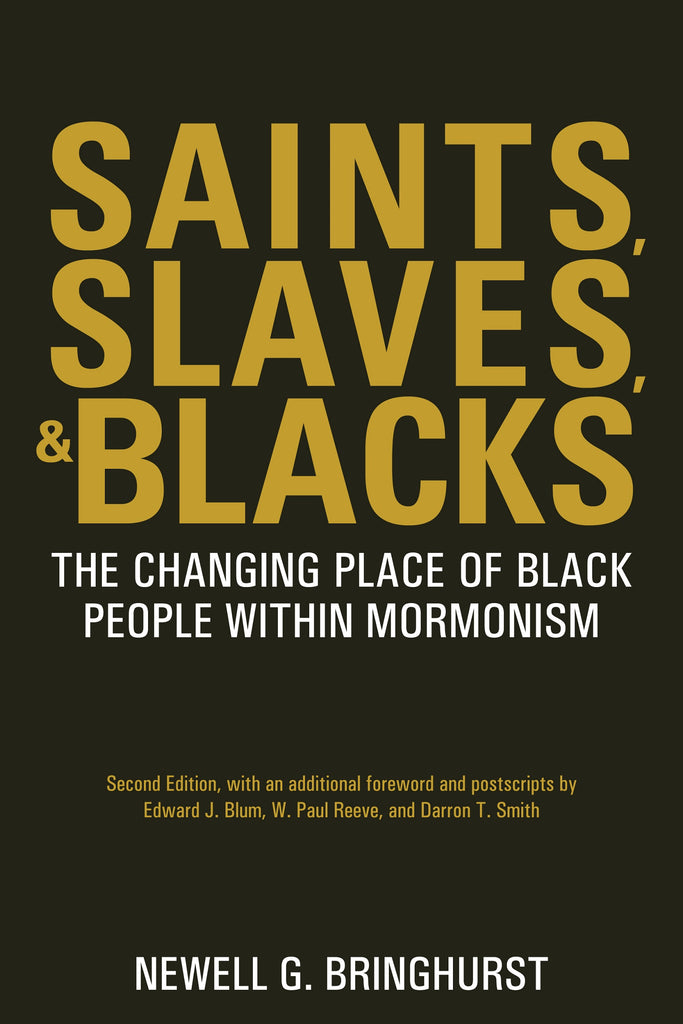




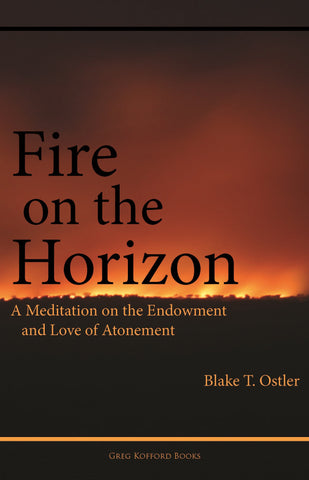
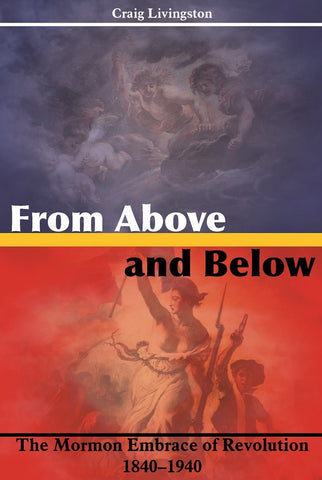
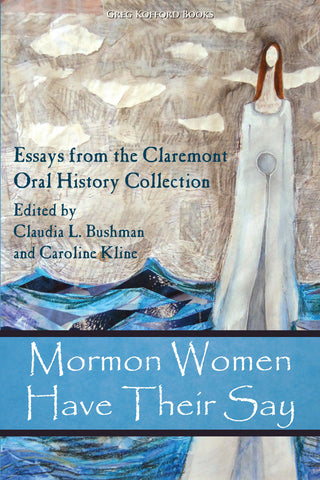
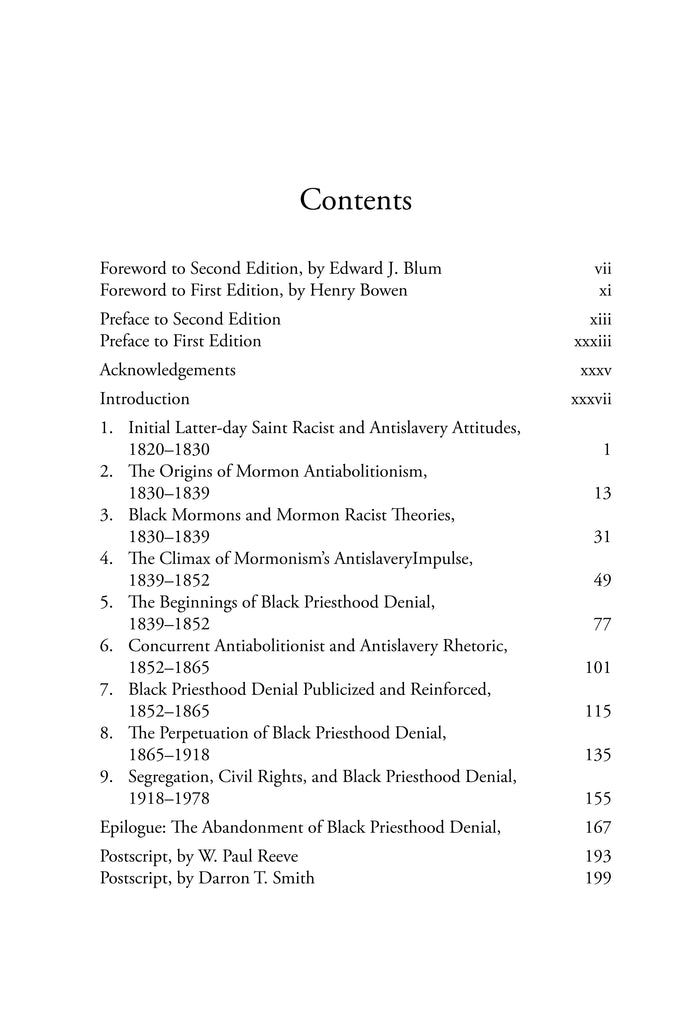
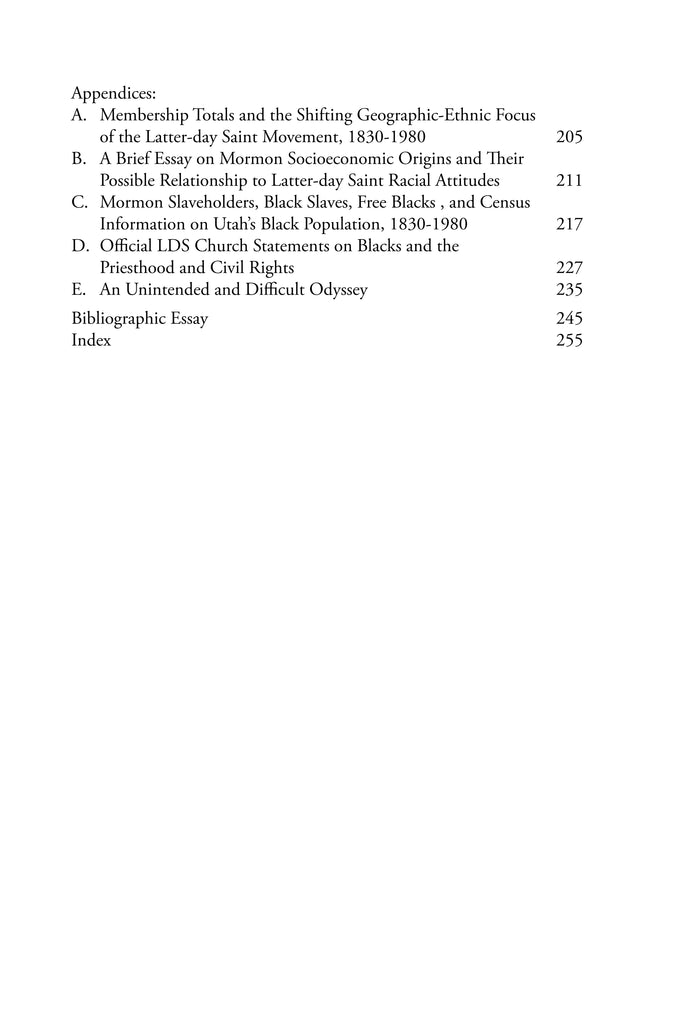
Share this item: